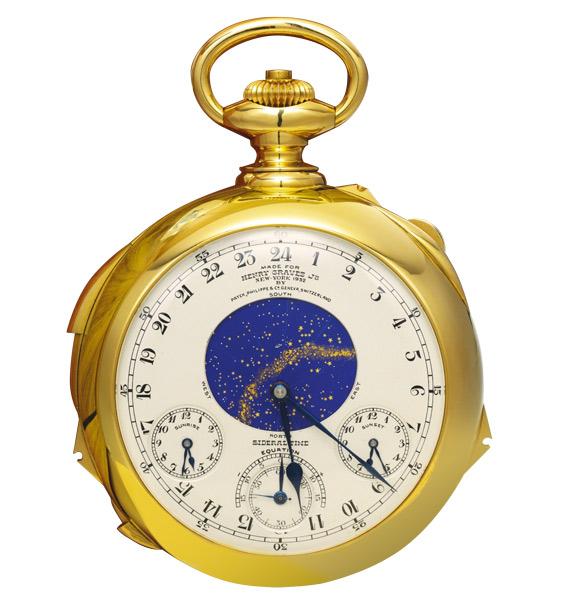3 historical watches that we can’t wait to see on the market again
Considered as historical watches, these horological icons are today kept in private collections.
Their last appearance on the market did not go unnoticed, and triggered extraordinary media coverage and auction battles.
What do they have in common? They are known to the greatest collectors, as they have all three been presented twice at auction exactly 15 years apart.
Because “Never two without three”, their next appearance on the market is already impatiently awaited by a handful of connoisseurs who say they are ready to pay the price to own one of these watchmaking grails.
While waiting for this next highlight, do you know why these watches are horological masterpieces?
A look at 3 historic watches that cannot be ignored.
WINSTON CHURCHILL’S WORLD TIME
The Heure Universelle is a complication invented by master watchmaker Louis Cottier in 1931. This watchmaker’s son, trained at the Geneva watchmaking school, devised an ingenious mechanism to tell the time of the world’s main cities.
Although Louis Cottier developed world time watches for Patek Philippe and Rolex, the factory of his great friend Hans Wildorf, it is estimated that he produced only 179 world time pocket watches, of which only 17 were equipped with a cloisonné enamel dial.
The most exceptional watch is certainly the one produced for Agassiz in 1945. The factory founded by Auguste Agassiz in 1932, which became Longines in 1966, received a very special order in the aftermath of the Second World War.
A group of Geneva citizens wishing to show their gratitude to the states that had delivered them from Nazism asked Agassiz to design a special watch, available in four examples, which was offered to General de Gaulle, Prime Minister Winston Churchill, President Harry Truman and Marshal Joseph Stalin.
In August 1945, Auguste Agassiz entrusted Louis Cottier with the production of this Victory watch, which was to be delivered by 30 November of the same year. The 4 watches were offered for Christmas 1945 to the 4 allied leaders.
Cottier designed a Universal Time watch with a cloisonné enamel decoration in the centre of the dial. The enamelled scene represented is unique for each watch and incorporates a cultural reference specific to the country it honours. For example, the watch presented to Winston Churchill features a representation of St George slaying the dragon, an allegory of the victory of Faith over Evil.
The hour hand takes the form of a trident symbolising England’s heroic struggle. The back features a world map with the V of Victory, topped by the inscription “1939 Prime Minister Winston Spencer Churchill 1945”.
The four cases were made by the Wenger company, run by Edouard Wenger, a childhood friend of Louis Cottier, and the dials were made by the Stern company.
Given by the Swiss politician Johannes Baumann to Winston Churchill, this watch was accompanied by a letter referring to the “happy warrior”. He inspired England to courage and endurance when she was alone, defenceless and in great peril, and led her for five years to victory.”
Winston Churchill thanked Baumann with these words: “It is a pleasure to own the beautiful watch you have been kind enough to give me. I so admire the care and quality with which this fine example of Swiss craftsmanship and precision has been made. My family and I will always cherish your superb gift which will remain in our heritage as a reminder of your beautiful country and of your friendly feelings which inspired your delicate attention to me.”
After Churchill’s death in 1965, the watch remained in the family until 1998, when it was first offered at auction in The Political Sale (Sotheby’s London, 15 July 1998, lot 96).
Coming directly from the Churchill family, the watch was sold for around 25,000 GPB at the time, the equivalent of €40,000 today. In 2017, it reappeared on the market for the second time and was sold for more than €540,000 (Sotheby’s, sale of 22 September 2017, lot 75), i.e. a price multiplied by 13 in 18 years!
An exceptional valuation when one remembers that the first of these four watches to appear on the market was the one offered to General de Gaulle. At the time, the watch was sold for CHF 126,000 by the Swiss auction house Antiquorum, the equivalent of barely €30,000 (sale on 14 October 1990, lot 92).
In barely two decades, the market seems to have grasped the historical significance of this watch.
To date, of the 4 watches made by Louis Cottier, only those given to Winston Churchill and General de Gaulle have appeared on the market and were sold by the families of the heads of state.
Since 1945, the watches given to Stalin and Truman have never appeared on the market… If they were to be rediscovered tomorrow, there is no doubt that they would unleash passions!
The story of this exceptional watch made by Louis Cottier especially for Churchill is told in the book La petite Histoire des grandes montres ,illustrated by Neis.
ROLEX “BAO DAI”, THE MOST EXPENSIVE EX-ROLEX IN THE WORLD
This is a historic watch, a 1952 Rolex, ref. 6062, in yellow gold with a full calendar and phases of the moon, fitted with a rare black dial set with 5 diamonds. Nicknamed the “Bao Dai,” this watch was purchased in Geneva in the spring of 1954 by the last Emperor of Vietnam. Travelling to Europe to attend the Indochinese Conference in Geneva, Bao Dai is said to have visited the retailer Philippe Beguin, located next door to the Hotel de Bergues (today’s Four Season) where he was staying, and asked for “the rarest and most expensive watch”. Although only three of these timepieces were produced, this version is exceptional, as it is the only one on record with diamonds to represent the even-numbered indexes. The Rolex crown at 12 o’clock is positioned slightly below its usual location, a detail that makes this watch unique and out of the ordinary. The following year, Bao Dai was overthrown by his prime minister and spent the rest of his life in exile, mainly in France, in Alsace.
The emperor died in 1997 at the Val-de-Grâce military hospital in Paris, and his watch was kept by his heirs, who decided to sell it in 2002. Presented for the first time at auction by Phillips, it was sold for $235,000, a record price that made it the most expensive Rolex watch ever sold at the time.
15 years later, on 13 May 2017, Phillips put this collector’s item up for sale for the second time. In exactly 8 minutes, the watch, sold under the number 93, shattered its previous record and sold for over 5 million dollars. It remained the most expensive Rolex in the world for six months, until the sale of Paul Newman’s mythical Daytona.
The Rolex Bao Dai is a legendary watch, and clearly one of the Rolexes that has marked the market for collector’s watches in recent years.
As proof, the Rolex Bao Dai is featured in the book 100 Superlative Rolex Watches, written by the renowned collector and historian John Goldberger.
A watch that will not go unnoticed when it is next put on the market!
PATEK PHILIPPE, HENRY GRAVES SUPERCOMPLICATION, A HOROLOGICAL MASTERPIECE
This is a yellow gold watch that has made auction history twice in 15 years. This unique timepiece, made by Patek Philippe to a commission from New York banker Henry Graves, required eight years of research and development.
This billionaire, founder and partner of Maxwell & Graves, is known as one of the greatest watch collectors of the 20th century. He had a special relationship with the Patek Philippe factory, and was one of the clients who enabled the watch company to survive the 1929 crisis by continuing to buy important timepieces. Between 1922 and 1951, Patek Philippe delivered 30 unique pieces made to order. The Henry Graves Supercomplication is the most accomplished of these.
This watch incorporates 24 complications, including a perpetual calendar with phases of the moon, sunrise and sunset indications for New York City, and a representation of the New York sky as it is over his house at 834 Fifth Avenue. In short, this watch is the finest horological masterpiece of the 20th century.
Henry Graves commissioned this unique watch in 1925. It took the master watchmakers at Patek Philippe more than three years of research and five years of craftsmanship to deliver this Supercomplication to its owner on January 19, 1933. The watch was entirely handmade without the use of any machines. To this day, no watch with so many complications has ever been made by human hands. In fact, this technical gem remained the most complicated watch in the world until 1989, when Patek Philippe surpassed itself with the calibre 89.
When Henry Graves died in 1953, the watch was sold by his heirs to the Rockford Time Museum. In 1999, the museum closed and the watch was sold for the first time at public auction by Sotheby’s, which set a world record: $11 million (Sotheby’s sale “Masterpieces from the Time Museum”, 2 December 1999, lot 7)! The Supercomplication became the most expensive watch in the world. It was acquired by Sheikh Saud bin Muhammed Al Thani, considered one of the greatest art collectors of all time.
In 2014, the Henri Graves Supercomplication was offered on the market for the second time by Sotheby’s (sale of 11 November 2014, lot 345) It was sold for 24 million, a new record!
This watch is now kept in the collections of the Patek Philippe Museum, which considerably reduces the chances of it reappearing on the market one day… But “we don’t know today what tomorrow will bring”! For let us not forget that this watch was kept for a long time in the collections of an American museum before miraculously appearing on the market…. Who knows? Maybe history will repeat itself!












